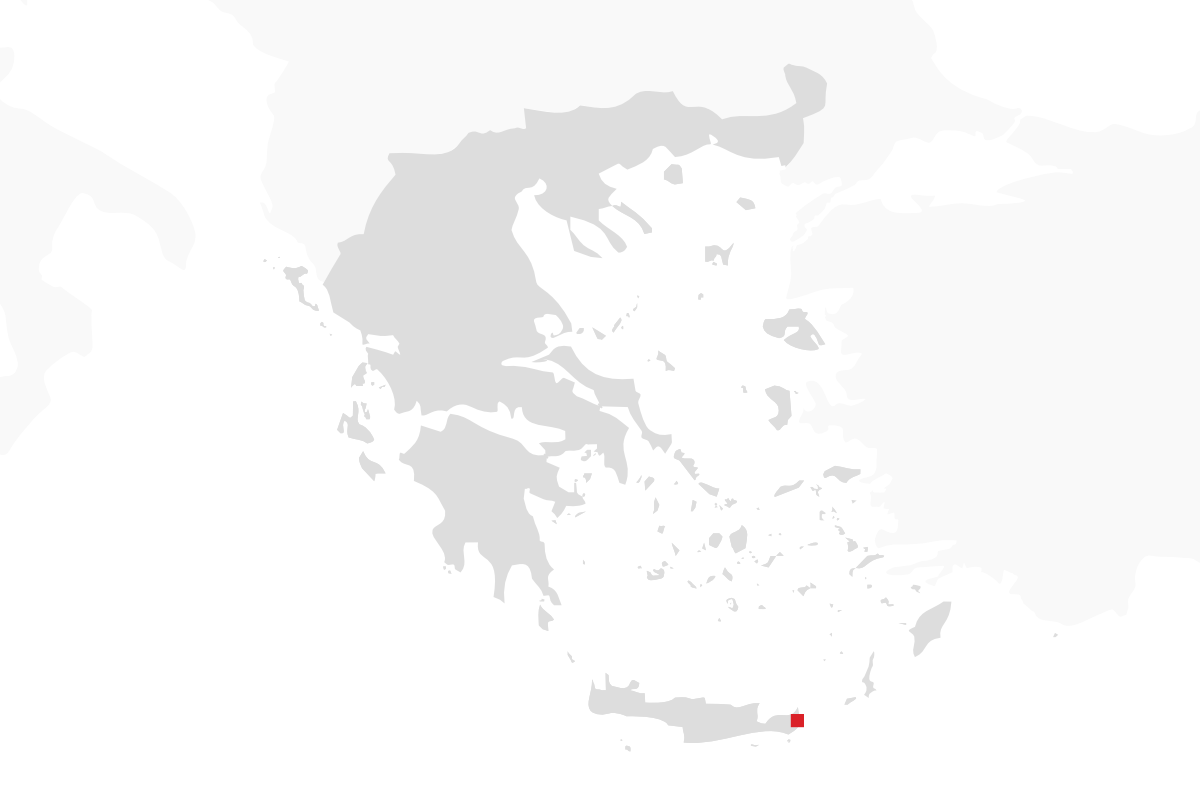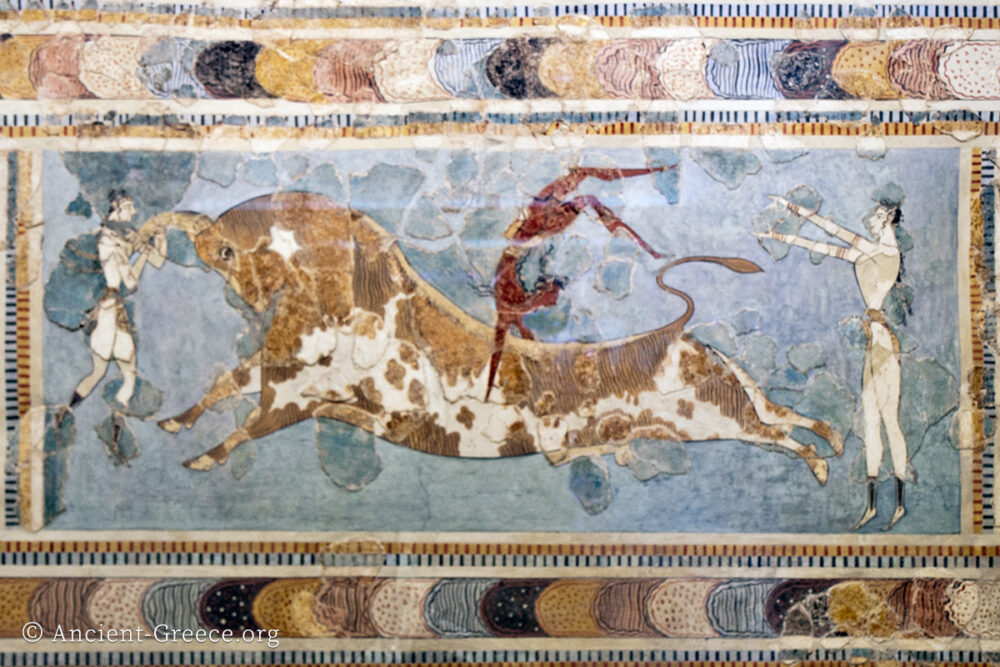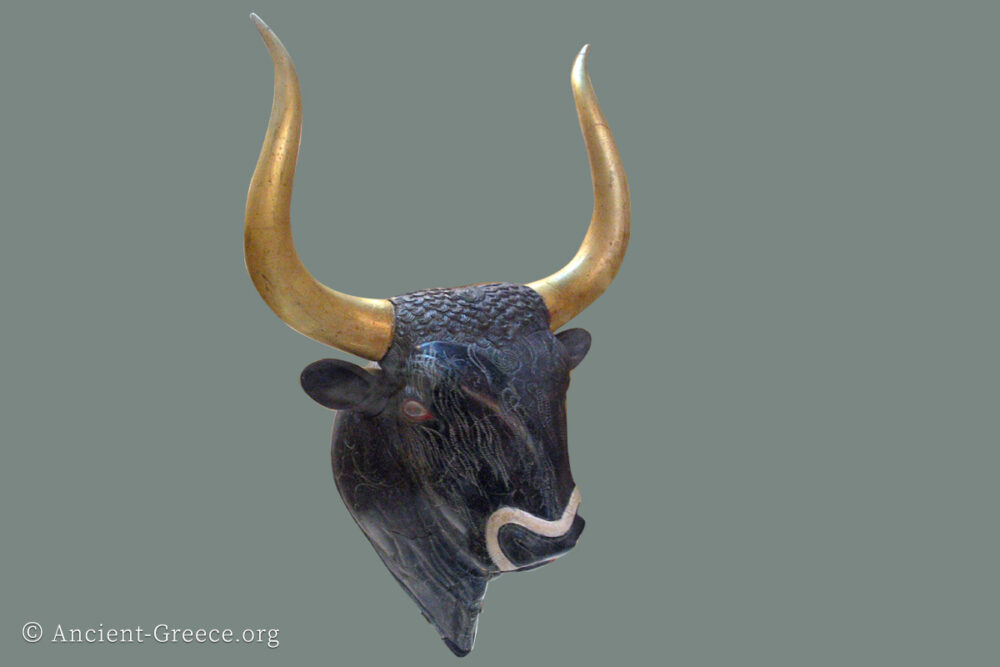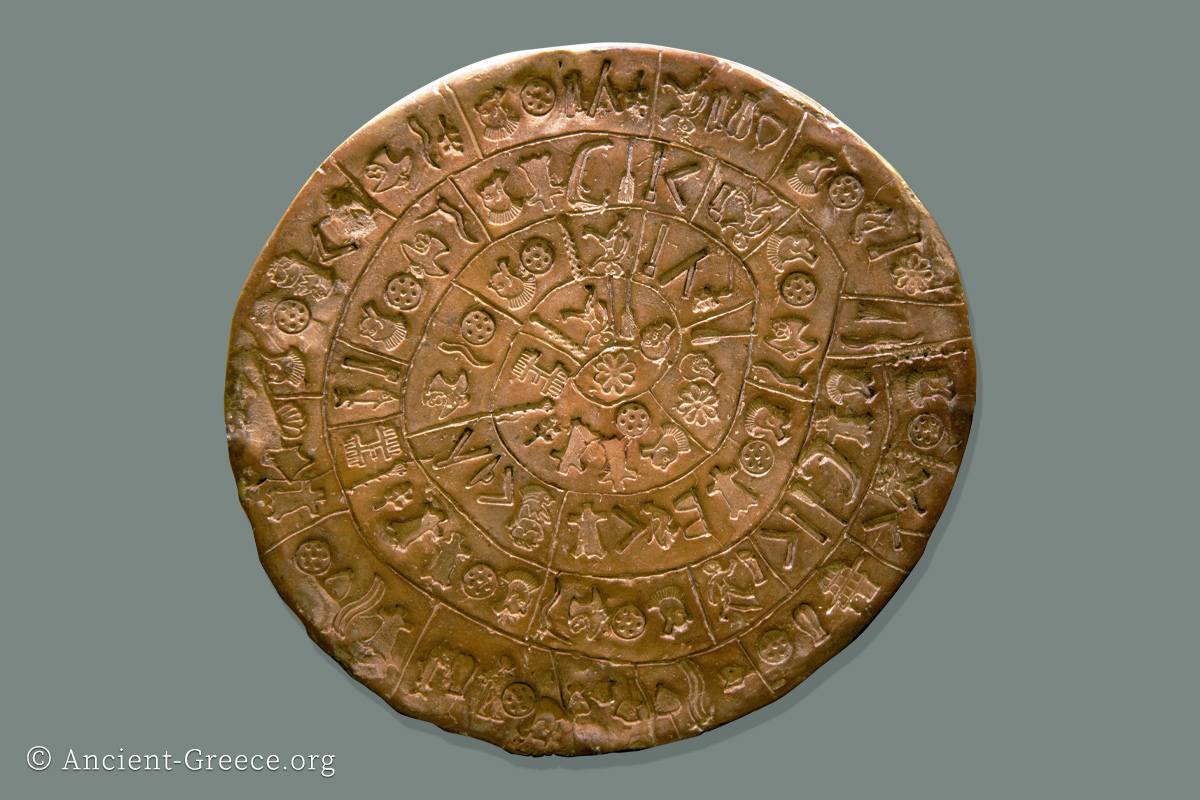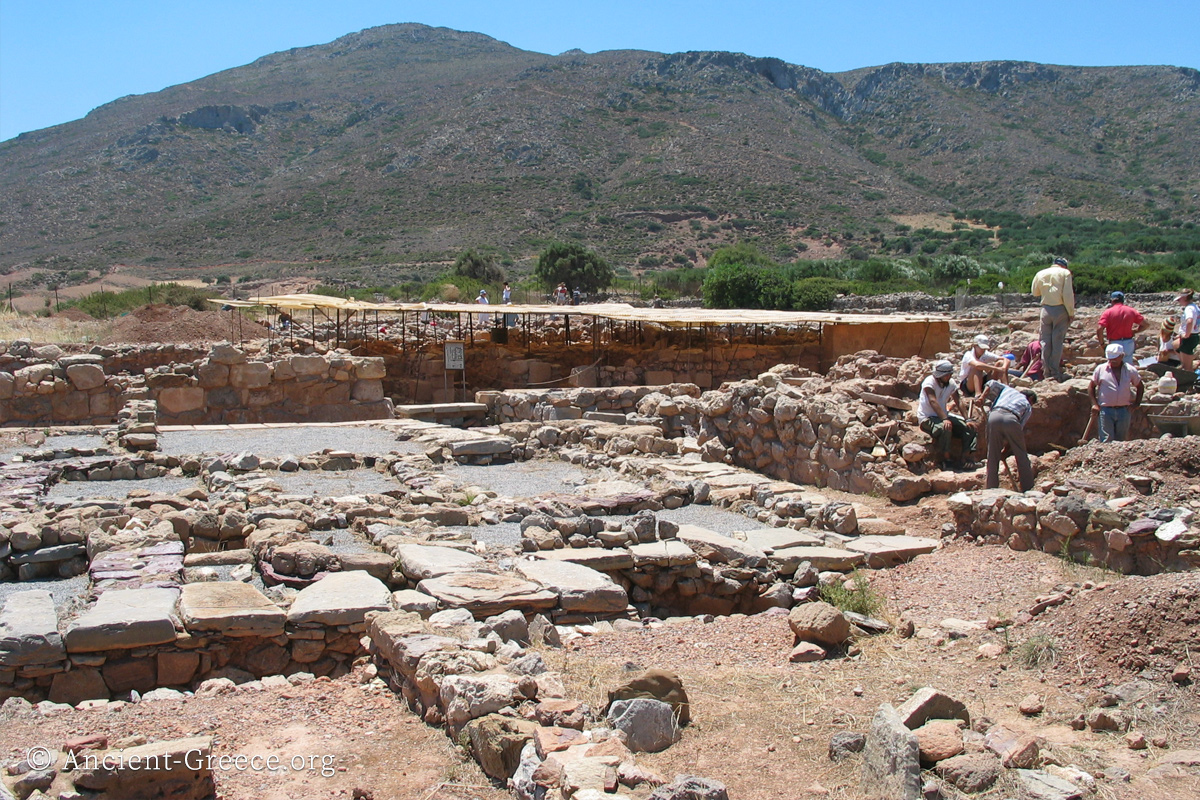
On this page:
Παλαίκαστρο (Palaikastro, sometimes also transliterated as Palekastro) Minoan town unearthed at the Rousolakos location near the modern town of Palaikastro.
The settlement is strategically located on the east shore of Crete, in Chiona harbor a few kilometers north of the Minoan palace of Kato Zakros.
Minoan Port on the East Coast
The location could not have been any more appropriate for settlement. The town is surrounded by fertile land that would have provided ample crops to sustain a large local population. The two adjacent harbors of Chiona, and Kouremenos are still rich fishing grounds just like they must have been in ancient times.
The bay of Chiona is situated in such way that the sea is sheltered from the relentless meltemi winds which blow from the North in the summer, and would have made the life miserable for ancient mariners trying to sail North and around cape Sideros to deliver goods to Malia or Knossos.
Avoiding treacherous waters and access towards the interior of the island would have easily tempted sailors from Egypt and the Levant to unload their cargo at Palaikastro for subsequent transport inland. The nearby palace of Zakros would also have been an option, thought it lacks the ease of access to the island’s interior that Palaikastro enjoys.
The area is still undergoing excavations, and what has been unearthed to date reveal a vigorous commercial hub that was home to an affluent community during the Minoan era.
The Town
The homes of Palaikastro, especially those facing the main road, were very impressive. Evidence of affluence can be found in a large building in area B with a kitchen, four rows of columns, a bathing tank, a well, an altar, a bathroom, and an oil storage facility. The town had an extensive water drainage system.
Everyday and precious objects (like the Ivory statuette called Palaikastro Kouros) from the excavations are now exhibited at the Sitia Museum.
The life of Minoan Palaikastro came to an abrupt end in 1400 (or 1500) BC at the same time the other Minoan Palaces and towns, and while there is no conclusive evidence, the volcanic eruption of Thera, or foreign invasion, or a combination of the two are considered as the most likely cause for the catastrophe.
Excavations
The excavations at Palaikastro began in the early 1900 AD and still continue to reveal the rich strata of archaeological evidence that begins in the Minoan period and continues to historical times.
There are indications that the excavated ruins might comprise a small part of a large settlement. The surrounding olive groves and the nearby beaches are strewn with pottery shards, and “radiophotography” surveillance of the area has provided evidence of what might be a Minoan palace in the area.
Palaikastro Photos
General views of Palaikastro archaeological site.
